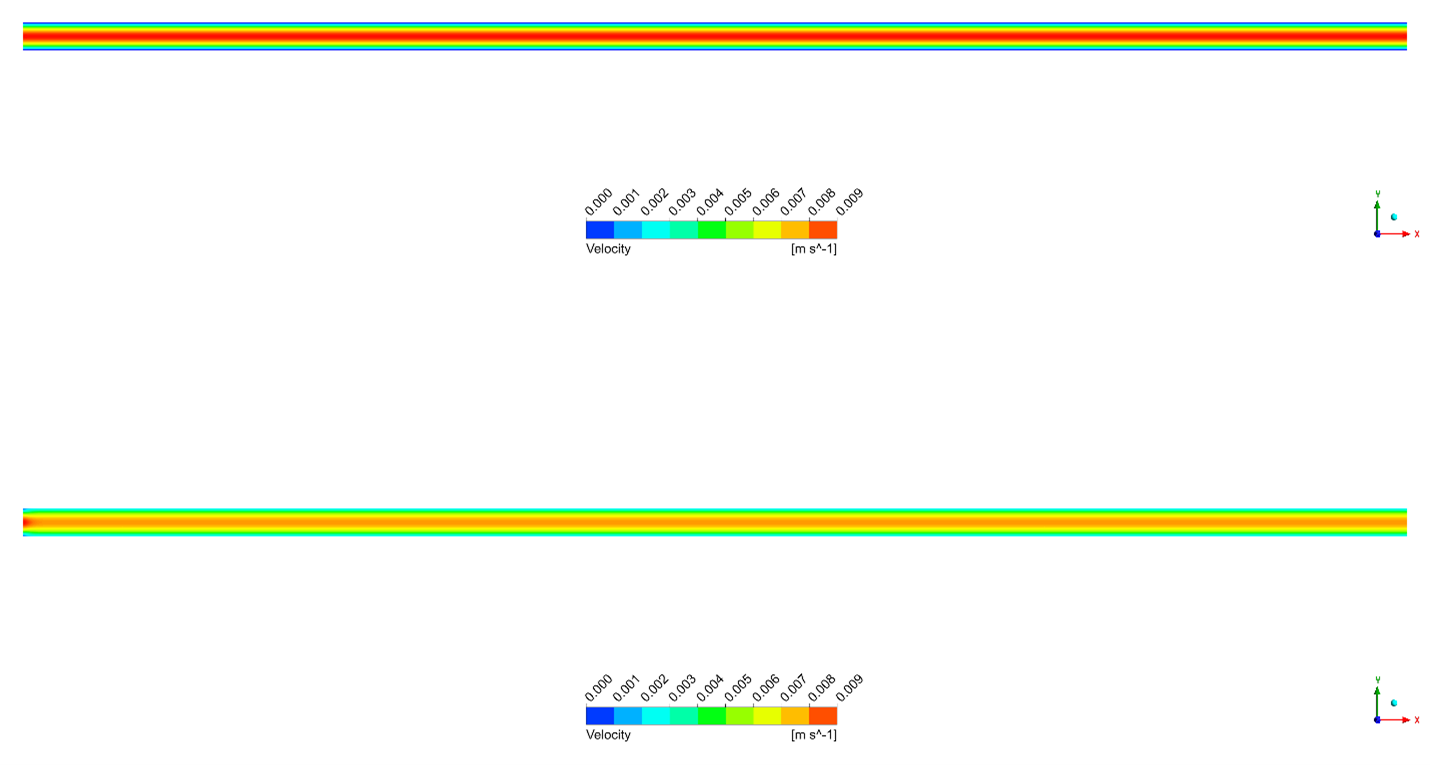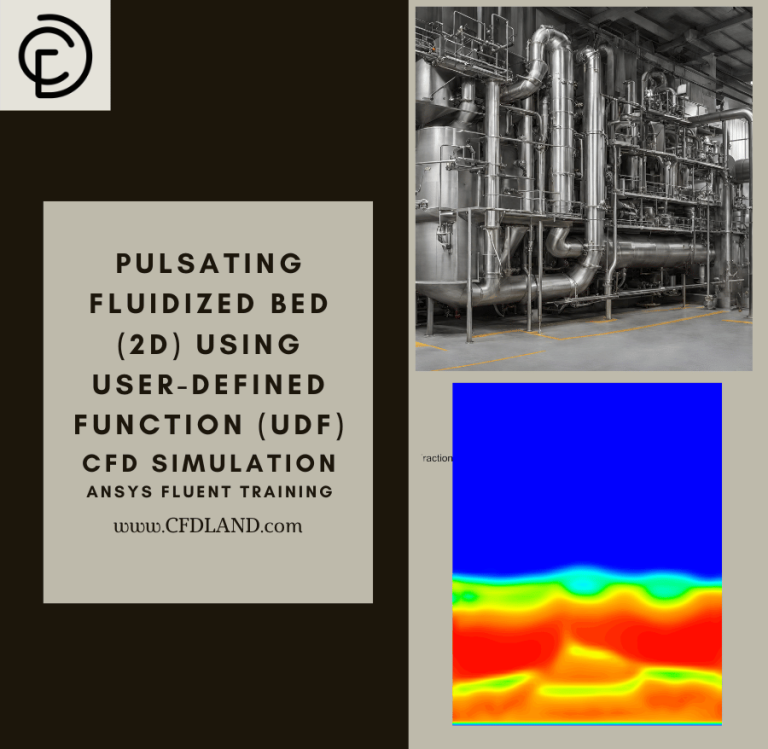Slip Flow CFD Simulation, ANSYS Fluent UDF Training
Slip Flow CFD Simulation, ANSYS Fluent UDF Training
- Upon ordering this product, you will be provided with a geometry file, a mesh file, and an in-depth Training Video that offers a step-by-step training on the simulation process.
- For any more inquiries regarding the product, please do not hesitate to reach out to us at info@CFDLAND.com or through our online support assistant.
€185 Original price was: €185.€145Current price is: €145.
In fluid dynamics, the standard assumption for macro-scale flows is the no-slip condition, where fluid molecules stick to solid boundaries. However, in microfluidics, this assumption breaks down. This project details a Slip flow CFD Simulation inside a 2D microchannel. Slip flow occurs when the fluid’s mean free path becomes comparable to the channel’s characteristic dimensions, a phenomenon common in MEMS devices and gas micro-conduits. From an engineering viewpoint, this means fluid molecules have less resistance at the walls, leading to different velocity profiles and flow rates. Because ANSYS Fluent does not have a built-in model for this, simulating it requires a custom Slip Flow UDF (User-Defined Function). This Slip Flow Fluent analysis aims to study these differences, based on the validation methods in the reference paper: “Numerical study of aerosol particle deposition in simple and converging–diverging micro-channels with a slip boundary condition at the wall [1]”.
- Reference [1]: Hosseini, Seyed Mohammad Javad, Ataallah Soltani Goharrizi, and Bahador Abolpour. “Numerical study of aerosol particle deposition in simple and converging–diverging

Figure 1: Visual comparison between slip and no-slip boundary conditions, a key concept in this Slip Flow CFD Simulation
Simulation Process – Implementing a Slip Flow UDF in Fluent
The geometry for this project, a simple 2D channel, was designed using ANSYS Design Modeler. A structured mesh was then generated, with a finer grid resolution near the walls to accurately capture the boundary layer effects. The most critical part of this Slip flow CFD setup is the implementation of a custom Slip Flow UDF. This UDF is essential because it applies the specific mathematical equations for the slip velocity condition directly to the microchannel walls. Without this custom code, it would be impossible to model this physical phenomenon accurately in the software. This highlights a key challenge and solution in advanced microfluidic simulations.
Post-processing – Slip Flow CFD Analysis: Comparing Slip vs. Non-Slip Results
The post-processing results clearly illustrate the significant impact of the slip boundary condition on the flow physics. The first paragraph of our analysis focuses on the velocity contours (Figure 2). The no-slip case (a) shows the classic parabolic velocity profile, with zero velocity at the walls and the maximum velocity occurring at the channel’s centerline. This is the expected behavior for standard laminar flow. In contrast, the Slip Flow Fluent case (b), which uses our Slip Flow UDF, shows a non-zero velocity at the walls. This is the “slip” itself. A key consequence is that the velocity gradient near the wall is much lower, leading to reduced wall shear stress. Interestingly, the maximum velocity at the centerline is visibly lower in the slip flow case. This is because with less resistance at the walls, the flow becomes more uniform across the channel’s cross-section, resembling a more “plug-like” flow.

Figure 2- Velocity contours from the Slip Flow CFD Simulation, comparing (a) the classic no-slip profile against (b) the slip flow regime enabled by the UDF.
The second paragraph of our analysis uses the quantitative data from the velocity profile graph (Figure 3) to explain the engineering implications. The red line (slip) and blue line (no-slip) provide a clear comparison. While the peak centerline velocity for the slip case is indeed lower (by approximately 15-20%), the crucial difference is the non-zero velocity at the walls. This means that although the peak is lower, the average velocity across the entire channel width is actually higher for the slip flow condition. This is a vital finding for microfluidic design. A higher average flow rate for the same pressure drop, combined with lower wall shear stress, means less energy is required to pump the fluid. This Slip Flow CFD Simulation accurately captures this trade-off, demonstrating how slip conditions can be highly advantageous in applications like lab-on-a-chip devices and other micro-scale systems.

Figure 3- Velocity profile comparison from the Slip Flow Fluent analysis, quantifying the difference between the red (slip) and blue (non-slip) conditions.
We pride ourselves on presenting unique products at CFDLAND. We stand out for our scientific rigor and validity. Our products are not based on guesswork or theoretical assumptions like many others. Instead, most of our products are validated using experimental or numerical data from valued scientific journals. Even if direct validation isn’t possible, we build our models and assumptions on the latest research, typically using reference articles to approximate reality.
Yes, we’ll be here . If you have trouble loading files, having technical problems, or have any questions about how to use our products, our technical support team is here to help.
You can load geometry and mesh files, as well as case and data files, using any version of ANSYS Fluent.
€140 Original price was: €140.€125Current price is: €125.

€195 Original price was: €195.€165Current price is: €165.

€125 Original price was: €125.€105Current price is: €105.

€155 Original price was: €155.€135Current price is: €135.

€205 Original price was: €205.€155Current price is: €155.

€245 Original price was: €245.€185Current price is: €185.















Reviews
There are no reviews yet.